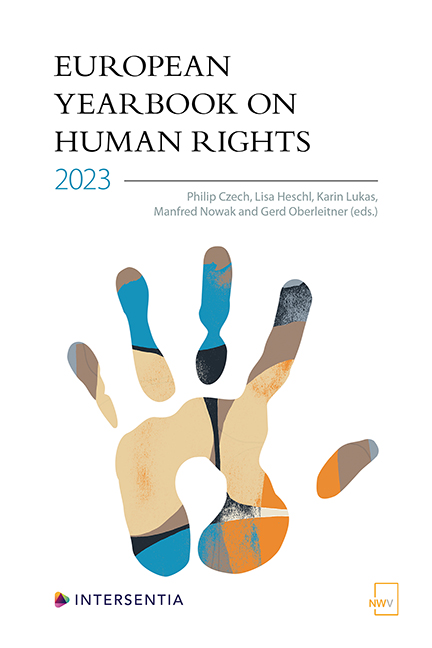When Aerial Surveillance Becomes the Sine Qua Non for Interceptions at Sea: Mapping the EU and its Member States’ Complicity in Border Violence
Published online by Cambridge University Press: 04 April 2024
Summary
ABSTRACT
Since the European Court of Human Rights’ findings in Hirsi Jamaa and Others v. Italy, European states have progressively moved away from ‘direct’ forms of interdictions and pushbacks, towards ‘indirect’ or ‘privatised’ pushbacks (and pullbacks). The increased reliance on aerial assets, presented as a hybrid strategy for maritime surveillance and combating irregular migration, has raised legal and political challenges. While, in theory, technological tools could be neutral, they rarely are when placed in context, as their use is influenced by the objectives of their owners and/or users. The dronisation of the EU's stronghold, in conjunction with Member States’ increasing activities beyond their territorial borders, has muddied the already murky waters of jurisdiction. The critical question addressed herein is whether the airborne cooperation-based mechanisms with third countries – as a cutting-edge trend for bridling asylum-seekers and other migrants from reaching EU borders – are capable of insulating Member States from complicity and legal liability in ways that the first generation of pushback strategies were not. Could aerial surveillance, and the chain of events that unfolds because of such surveillance, be enough to establish a jurisdictional link? This contribution argues that the current understandings of jurisdiction are unable to capture new modalities of ‘soft’ and ‘detached’ control, which nonetheless result in violations of international human rights law and international refugee law. A dynamic and evolutive interpretation of jurisdiction that considers technological developments and their impact on the exercise of control, the contribution argues, is not only necessary, but also essential, to avoid protection gaps and unaccountability.
INTRODUCTION
Since the findings of the European Court of Human Rights (ECtHR) in Hirsi Jamaa and Others v. Italy, European states have progressively moved away from ‘direct’ forms of interdictions and pushbacks. Instead, ‘indirect’ or ‘privatised’ pushbacks (and pullbacks) have become predominant, albeit with some exceptions. In particular, the European Union (EU) and its Member States have largely invested in what might be called a schizophrenic attitude towards autonomous technologies for monitoring and securing border spaces. From unpiloted military-grade drones to sensor systems and experimental technology, autonomous technologies have been utilised as security/deterrent enablers in the Mediterranean and Aegean Seas for surveillance, interdiction and interception of migrants and refugees’ vessels.
- Type
- Chapter
- Information
- European Yearbook on Human Rights 2023 , pp. 475 - 506Publisher: IntersentiaPrint publication year: 2023



